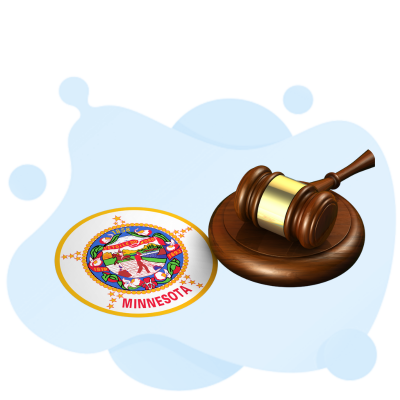
Aspiring attorneys in Minnesota have a big step ahead – the Minnesota Bar Exam, also known as the MN Bar Test. This guide gives you all the key info you need to get licensed in Minnesota.
It covers everything from the exam’s rules and structure to how to study and what to do on test day. It’s for both new law school grads and professionals wanting a license in another state. This guide will give you the confidence to pass the MN Bar Exam.
Aspiring attorneys in Minnesota must pass the Minnesota Bar Exam. This test is given by the Minnesota State Bar Association. To take the exam, candidates need to meet certain education and residency requirements.
Candidates need a Juris Doctor (J.D.) degree from an American Bar Association (ABA)-accredited law school. They also must be a Minnesota resident or have done at least 12 credit hours of legal education in the state.
The Minnesota Bar Exam has several parts. These include the Multistate Bar Examination (MBE), Multistate Essay Examination (MEE), and Multistate Performance Test (MPT). These tests check a candidate’s legal knowledge and how they apply it in real situations.
| Exam Component | Description |
|---|---|
| Multistate Bar Examination (MBE) | A 6-hour multiple-choice test covering a wide range of legal subjects, including constitutional law, contracts, criminal law and procedure, evidence, real property, and torts. |
| Multistate Essay Examination (MEE) | A 3-hour exam that requires candidates to draft written responses to a series of essay questions on various areas of law. |
| Multistate Performance Test (MPT) | A 90-minute test that assesses an applicant’s ability to complete a typical law-related task, such as drafting a memo, letter, or other legal document. |
Passing these tough parts of the exam shows that aspiring attorneys in Minnesota know a lot about law. It also shows they’re ready to practice law in the state.
Getting ready for the Minnesota Bar Exam needs a good plan. Aspiring lawyers should make strong study habits, use great resources, and know the exam layout. This will help them do well.
Starting with a solid study plan is key for the MN Bar Exam. Candidates should set aside enough time for a deep dive into legal topics, practice questions, and mock exams. Tools like study guides, flashcards, and online materials can make learning stick better. Getting feedback from mentors or legal experts is also key to spot areas to improve.
Many future lawyers also sign up for bar review courses. These courses offer deep legal training, tips for taking tests, and lots of practice materials. Doing practice tests can make candidates feel more confident and get used to the exam’s style and timing. This can lead to better scores on the actual test.
To take the Minnesota Bar Exam, you must graduate from an ABA-approved law school. You also need to meet certain residency and education standards set by the Minnesota State Bar Association.
The Minnesota Bar Exam has three main parts: the Multistate Bar Examination (MBE), the Multistate Essay Examination (MEE), and the Multistate Performance Test (MPT).
Good study tips include making a detailed study plan and using practice tests and question banks. Also, consider joining a reputable bar review course. There are many study guides and practice materials out there to help you prepare.
Yes, there are bar review courses and practice tests made just for the Minnesota Bar Exam. These resources are great for getting used to the exam’s format and content. They also help with test-taking strategies.
Law school graduates should study thoroughly and practice a lot. It’s also important to keep up with any changes to the exam. Use all the resources and support from the Minnesota State Bar Association you can.